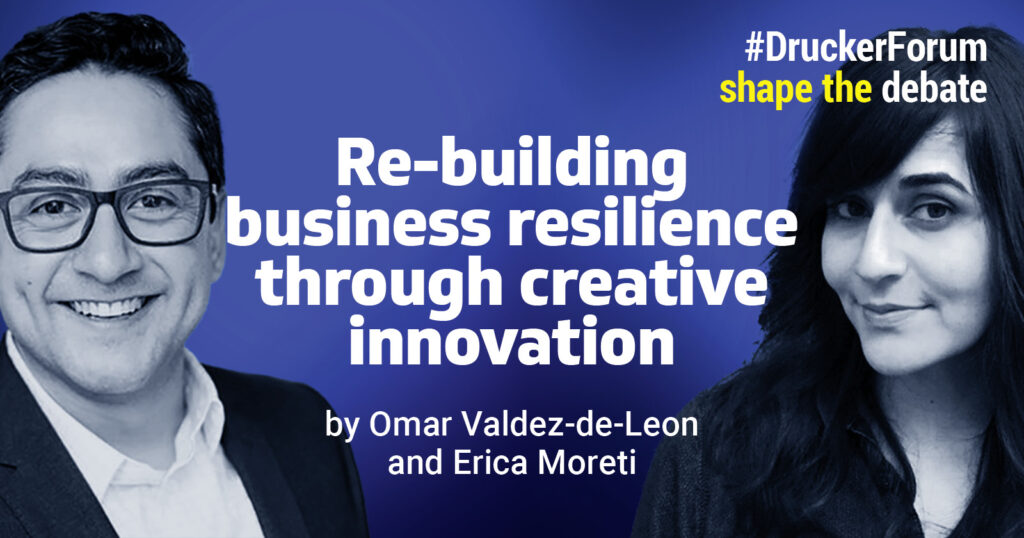
After the recent events like the pandemic and conflict in Europe, with supply chains still recovering and ebullient inflation, the economic outlook for businesses has become more challenging. We’ve seen the direct effects on businesses: (1) higher operational and capital costs; and (2) weaker demand as consumers rethink their spending patterns. A key question for business leaders: Is it possible to innovate to build resilience in an era where cheap money is no longer available? The answer: Yes.
Investing in Innovation in a Downturn is critical…
Innovation might seem like a luxury in times like these, but it is indeed more critical than ever. Innovation not only helps businesses work their way through recessions but prepares them for the subsequent upturn. Recessions are ultimately transient. As American Express CEO Ken Chenault said in 2008: “A difficult economic environment argues for the need to innovate more, not to pull back.”
…but it Demands a Strategic Approach
At times of restraint, teams and funds for innovation are often the first candidates for cutting. This is a mistake. Research suggests that companies that skimped on innovation during the 2008 crisis, as the cost of capital skyrocketed, had lower performance after the crisis had passed. Conversely, companies that cut costs but reallocated resources to strategic innovation projects, were more resilient and outperformed when the economy recovered.
How Should You Reassess & Rebuild Your Innovation Portfolio to Create Resilience?
Four key activities are essential to rebuild your innovation portfolio:
1. Rediscover Your Customers
You must reacquaint yourself with your customers, their needs and wants, and how these are evolving as the environment changes. During downturns, customers may tend to revisit their spending and new patterns emerge. This raises several questions: How are spending patterns shifting? What changes will stick even after an upturn? Can we assess (beyond assumptions) the changes in an unbiased manner?
We have seen many organisations achieving results from adopting this approach of rediscovering customers, and reimagining value propositions based on that new knowledge. Ikea, for example, has different innovation teams to unearth customers’ nascent needs: Space 10, is a think tank established to assess how living patterns shift; there is also a Circular Innovation team focused on innovations addressing growing customers’ demands for sustainable products.
At times of reduced budgets, not starting at a place of deep understanding of the customer can be expensive and wasteful.
2. Restructure Your Innovation Portfolio
As you rediscover your customer’s evolving needs, your innovation portfolio needs to be re-aligned to those new priorities. If, for example, your customers are moving to electric vehicles, then the focus on repurposing petrol stations becomes a top priority. Here, it is essential to evaluate every project with a zero-based lens and be ruthless in restructuring the portfolio. As the cost of capital rises, it is critical to free up cash from projects that are no longer aligned to the market reality and reallocate it to programs that do.
With a CPG firm we worked with recently, we’ve seen how revisiting its portfolio (after an unprecedented uplift in online sales generated by the pandemic started to fizzle out) helped it bring clarity across teams, and ultimately better results as investments and customer needs were better aligned.
3. Revamp Your Operating Model
Restructuring your innovation portfolio is only part of the story. You also may need to (re-)define how innovation is done; moving away from long and expensive project planning and execution processes and toward a nimbler and open approach — one in which smaller experiments are favoured, a data-driven, learn-fast culture is adopted and the cost of prototyping and testing, including working with external parties, is significantly reduced to make innovation more effective and efficient.
A Middle-eastern retail holding we worked with recently was looking to build an innovation model to help them succeed in the coming years. They set out to define their innovation framework from the ground up: new stage gates, prioritisation criteria, and metrics relevant to each phase, as well as governance, data collection, capabilities and its overall innovation funding model. In our experience having helped dozens of businesses, institutions and governments establish new innovation capabilities, we have found that building the right innovation operating model is crucial.
4. Reimagine Your Value Proposition
Having rediscovered the changing needs of customers and adopted a more creative and knowledge-driven innovation approach, reimagining your value propositions (current and future ones) becomes easier and is done with more confidence. Nike, for example, has dedicated innovation teams to research and define new value propositions, build concepts and rapidly test them to ensure they resonate with customers before implementation even begins.
Building evolutive value propositions that resonate with customers needs and wants, both today and tomorrow, is the ultimate source of resilience.
Looking at an Uncertain Future
At times of high uncertainty, budgets come under intensified scrutiny. However, if we accept that continuous uncertainty is the new norm, backing away from innovation is not the intelligent choice. As the economy and consumer preferences evolve in a new economic cycle, it is the one tool that can help businesses build a healthy creative resilience for that new future.
How is your business building resilience today?
About the author:
Omar Valdez-de-Leon is the founder of Latitude 55 Consulting, an European advisory in areas of strategy, innovation and business transformation.
Erica Moreti is an innovation executive based in Milan and a strategic foresight professor at Milan Polytechnic.

